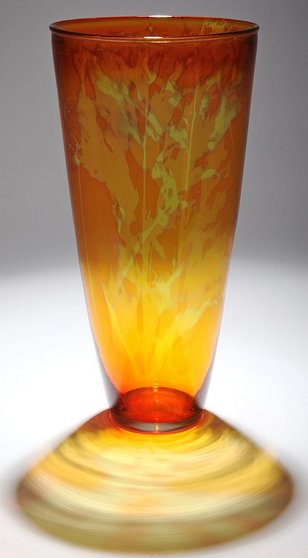Photosensitive Glass on:
[Wikipedia]
[Google]
[Amazon]
 Photosensitive glass, also called photostructurable glass (PSG) or photomachinable glass, is a
Photosensitive glass, also called photostructurable glass (PSG) or photomachinable glass, is a
 Photosensitive glass, also called photostructurable glass (PSG) or photomachinable glass, is a
Photosensitive glass, also called photostructurable glass (PSG) or photomachinable glass, is a glass
Glass is an amorphous (non-crystalline solid, non-crystalline) solid. Because it is often transparency and translucency, transparent and chemically inert, glass has found widespread practical, technological, and decorative use in window pane ...
in the lithium
Lithium (from , , ) is a chemical element; it has chemical symbol, symbol Li and atomic number 3. It is a soft, silvery-white alkali metal. Under standard temperature and pressure, standard conditions, it is the least dense metal and the ...
-silicate
A silicate is any member of a family of polyatomic anions consisting of silicon and oxygen, usually with the general formula , where . The family includes orthosilicate (), metasilicate (), and pyrosilicate (, ). The name is also used ...
family of glasses onto which images can be etched using shortwave radiations, such as ultraviolet
Ultraviolet radiation, also known as simply UV, is electromagnetic radiation of wavelengths of 10–400 nanometers, shorter than that of visible light, but longer than X-rays. UV radiation is present in sunlight and constitutes about 10% of ...
. Photosensitive glass was first discovered by S. Donald Stookey in 1937.Paul, p. 333Encyclopædia Britannica, pp. 194–209Maluf, pp. 62–63
Exposure process
When the glass is exposed to UV light with wavelengths between 280 and 320 nm, alatent image
A latent image is an invisible image produced by the exposure to light of a photosensitive material such as photographic film. When photographic film is developed, the area that was exposed darkens and forms a visible image. In the early days of ...
is formed. The glass remains transparent at this stage, but its ability to absorb UV light increases. This increased absorption is only detectable using UV transmission spectroscopy and is caused by an oxidation–reduction reaction that occurs inside the glass during exposure. This reaction causes cerium ions to oxidize to a more stable state, and silver ions are reduced to silver.
Post-exposure heat treatment
The latent image captured in the glass is made visible by heating. This heat treatment is done by raising the temperature to about 500 °C to allow the oxidation–reduction reaction to form silver nanoclusters. Following this, the temperature is raised to 550–560 °C, and lithium metasilicate (Li2SiO3) forms on the silver nanoclusters. This material forms in the crystalline phase.HF chemical etching
The lithium metasilicate in the exposed regions of the glass can be etched byhydrofluoric acid
Hydrofluoric acid is a solution of hydrogen fluoride (HF) in water. Solutions of HF are colorless, acidic and highly corrosive. A common concentration is 49% (48–52%) but there are also stronger solutions (e.g. 70%) and pure HF has a boiling p ...
(HF). This forms glass microstructures with a roughness in the range of 5 μm, resulting in a three-dimensional image of the mask to be produced.
See also
*Photochromic lens
A photochromic lens is an optical lens that darkens on exposure to light of sufficiently high frequency, most commonly ultraviolet (UV) radiation. In the absence of activating light, the lenses return to their clear state. Photochromic lenses ma ...
References
Bibliography
* Encyclopædia Britannica, ''The New Encyclopædia Britannica'', v.8 Macropaedia Ge-Hu, Encyclopædia Britannica, 1974, * Parker, Sybil P., ''Dictionary of Scientific and Technical Terms.'' McGraw-Hill Companies, Inc., (2003) - "photosensitive glass," , * Maluf, Nadim et al., ''Introduction to Microelectromechanical Systems Engineering'', Artech House, 2004, * Paul, Amal, ''Chemistry of Glasses'', Springer, 1990, * Stookey, S. Donald, ''Journey to the Center of the Crystal Ball : An Autobiography'', American Ceramic Society (1985), * Stookey, S. Donald, ''Explorations in Glass: An Autobiography'', Wiley-Blackwell (2000),External links
{{DEFAULTSORT:Photosensitive Glass Glass chemistry Photography equipment Ceramic materials American inventions